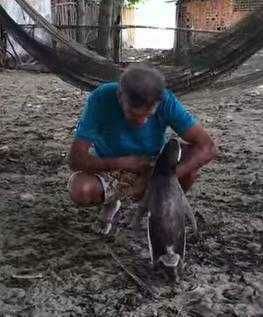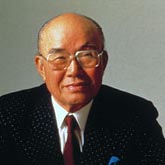
Arunachalam Muruganantham with one of his machines for making sanitary pads: Aljazeera
Arunachalam Muruganantham was obsessed with making the perfect sanitary pad for his wife. After years of work, his invention has changed the lives of millions of women in India. Arunachalam Muruganantham’s invention came at a great personal cost – he nearly lost his family, his money and his place in society. But he kept his sense of humour.

It all began in 1998, when Arunachalam Muruganantham, the son of poor handloom weavers in South India, realised that his wife was using old rags to deal with menstruation because she couldn’t afford sanitary pads. Muruga was shocked. But he also saw a chance to impress her. He decided to produce her sanitary pads himself. At first it seemed a simple task: he bought a roll of cotton wool and cut it into pieces, the same size as the pads sold in the shops, and then wrapped a thin layer of cotton around it. He presented this homemade prototype pad to his wife and asked her to test it. The feedback she gave him was devastating: his pad was useless and she would rather continue using old rags.
Where did he go wrong? What was the difference between his sanitary pads and those available at the shop? Muruga started experimenting with different materials, but was faced with another problem: he always had to wait a month before his wife could test each new prototype.
Muruganantham says that he was shocked to learn that women in rural areas don’t just use old rags, but other unhygienic substances such as sand, sawdust, leaves and even ash.
Women who do use cloths are often too embarrassed to dry them in the sun, which means they don’t get disinfected. Approximately 70% of all reproductive diseases in India are caused by poor menstrual hygiene – it can also affect maternal mortality.
Muruga needed volunteers and had an idea where he might find them. He asked medical students at a university close to his village. Some of them actually tested his pads but they were too shy to give him detailed feedback.
Left with no alternative, he decided to test the sanitary pads himself. He built a uterus using a rubber bladder, filled it with animal blood and fixed it to his hip. A tube led from the artificial uterus to the sanitary pad in his underpants. By pressing the bladder he simulated the menstrual flow.
Unfortunately he began to smell foul and his clothes were often stained with blood. His neighbours soon noticed this. It was clear to them that Muruga was either ill or perverted. After a while his wife couldn’t stand the constant gossip. She left him and went to live with her mother.
But Muruga didn’t give up. He knew why he was going through all this. During his research he had learned that only ten to twenty percent of all girls and women in India have access to proper menstrual hygiene products. This was no longer just about helping his wife. Muruga was on mission: to produce low-cost sanitary pads for all the girls and women in his country.
It was two years before he finally found the right material and another four years before he developed a way to process it. The result was an easy-to-use machine for producing low-cost sanitary pads. Imported machines cost over US$500,000. Muruga’s machine, by contrast, is priced at US$950.
Now women’s groups or schools can buy his machine, produce their own sanitary pads and sell the surplus. In this way, Muruga’s machine has created jobs for women in rural India. He has started a revolution in his own country, selling 1,300 machines to 27 states, and has recently begun exporting them to developing countries all over the world.
Today he is one of India’s most well-known social entrepreneurs and TIME magazine named him one of the 100 most influential people in the world in 2014.
Several corporations have offered to buy his machine, but he has refused, instead preferring to sell to women’s self help groups.
Some Facts:
* 300 million: The number of women in India without access to safe menstrual hygiene products.
* 1 in 5: The number of girls in India who drop out of school due to menstruation.
Source: Al Jazeera













